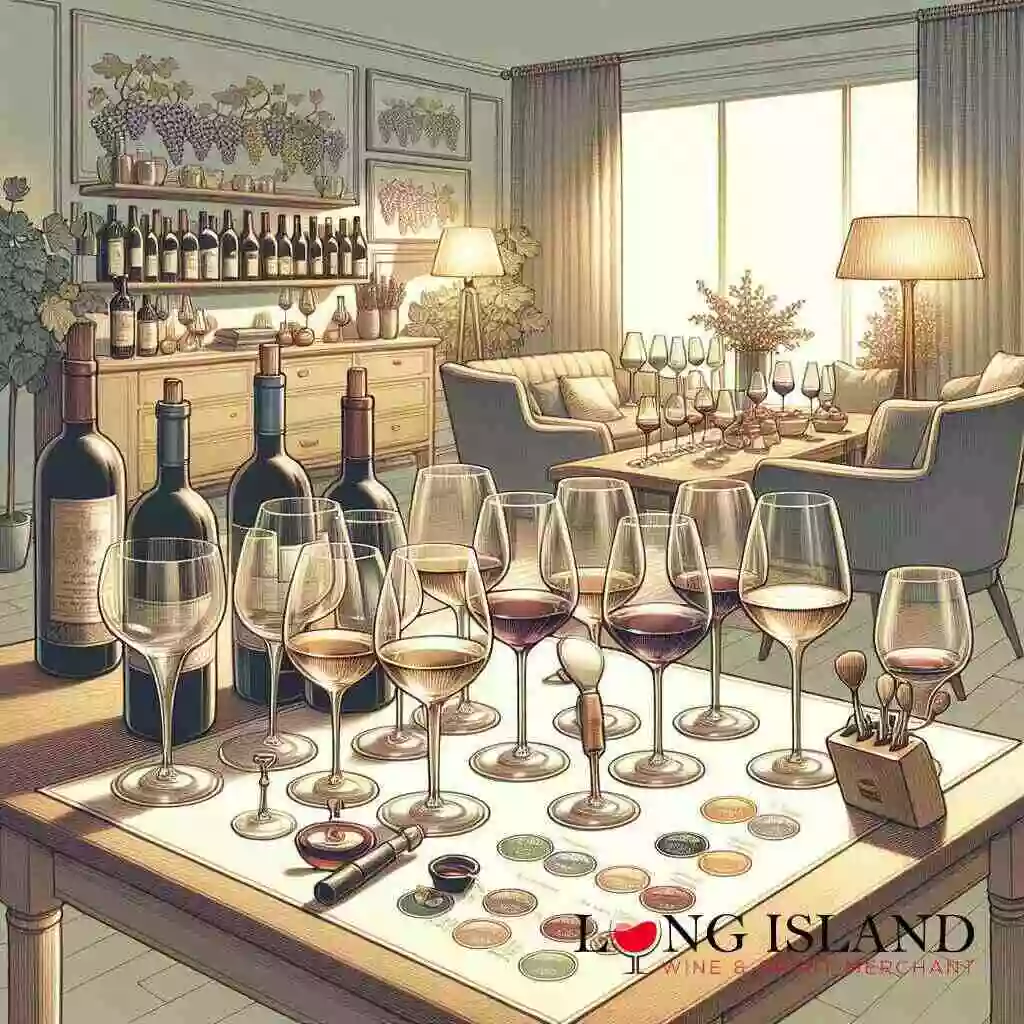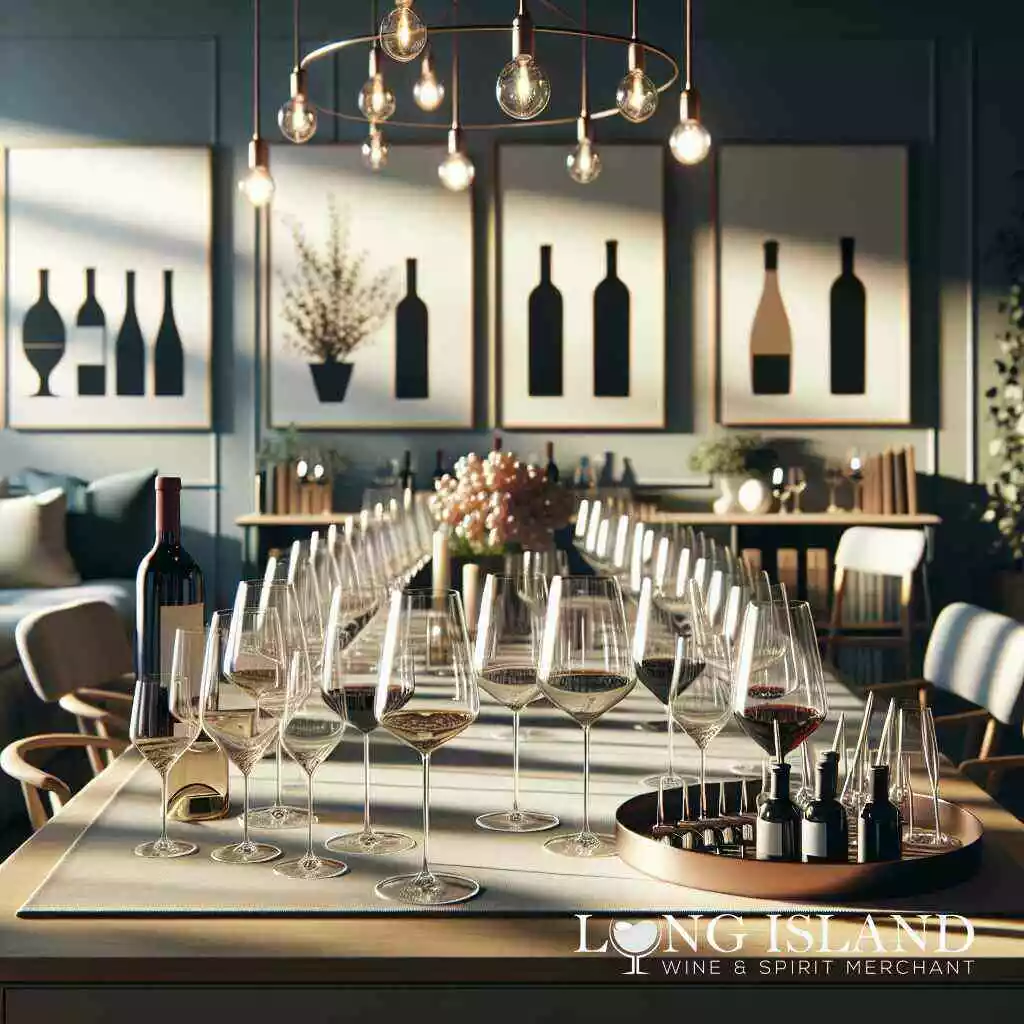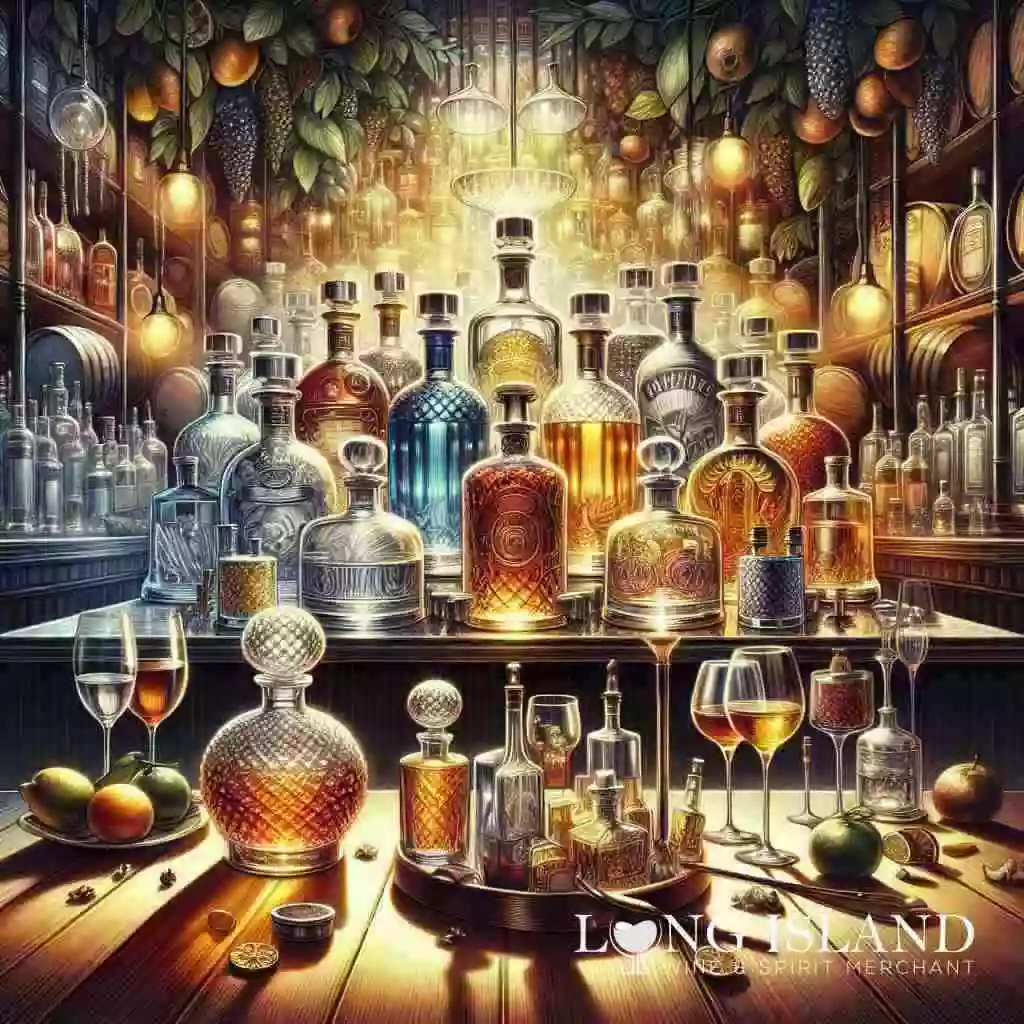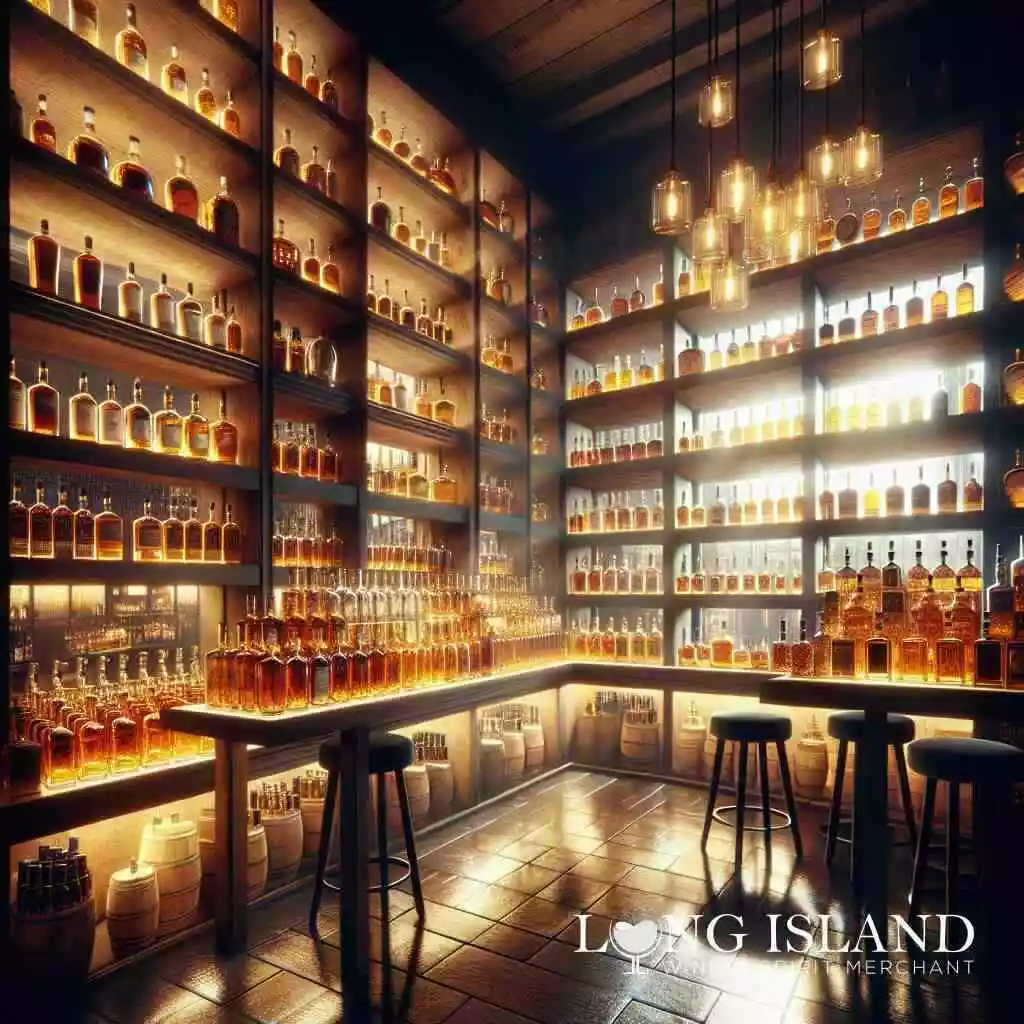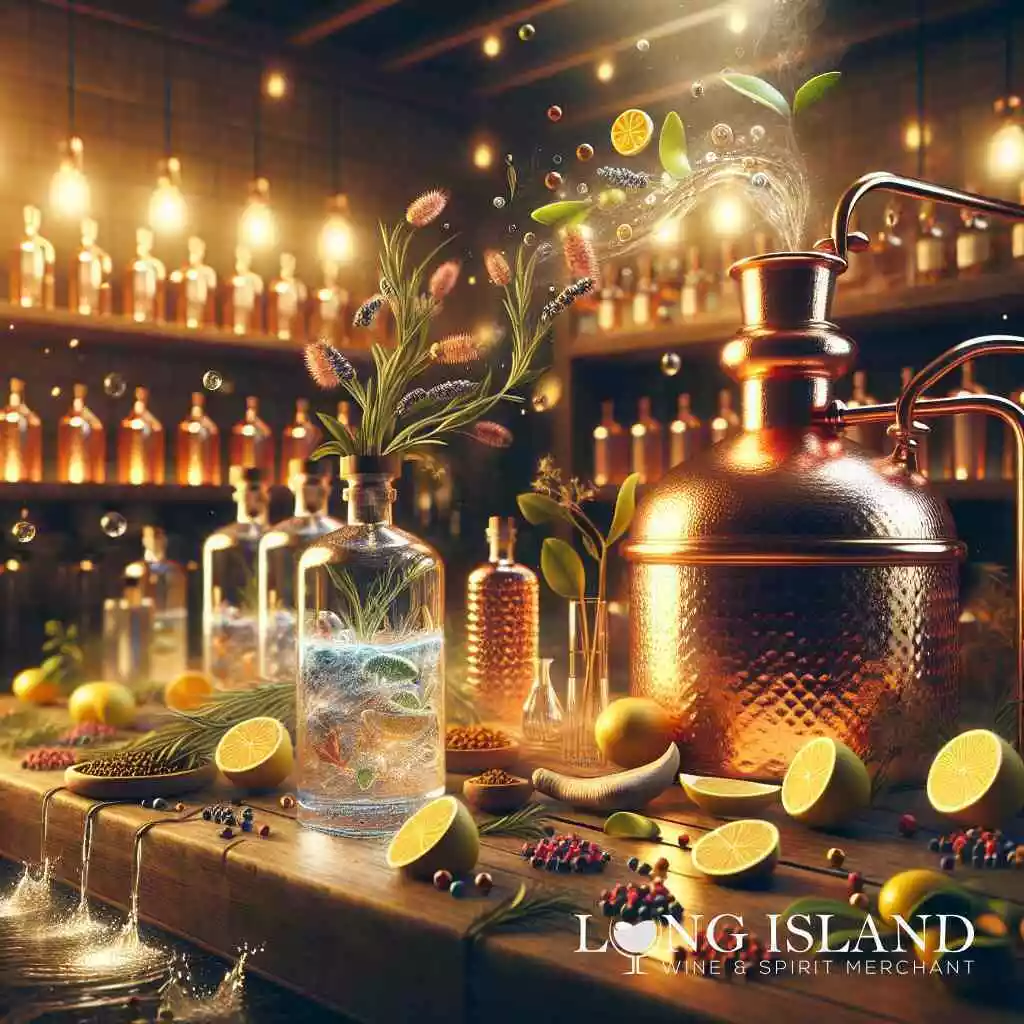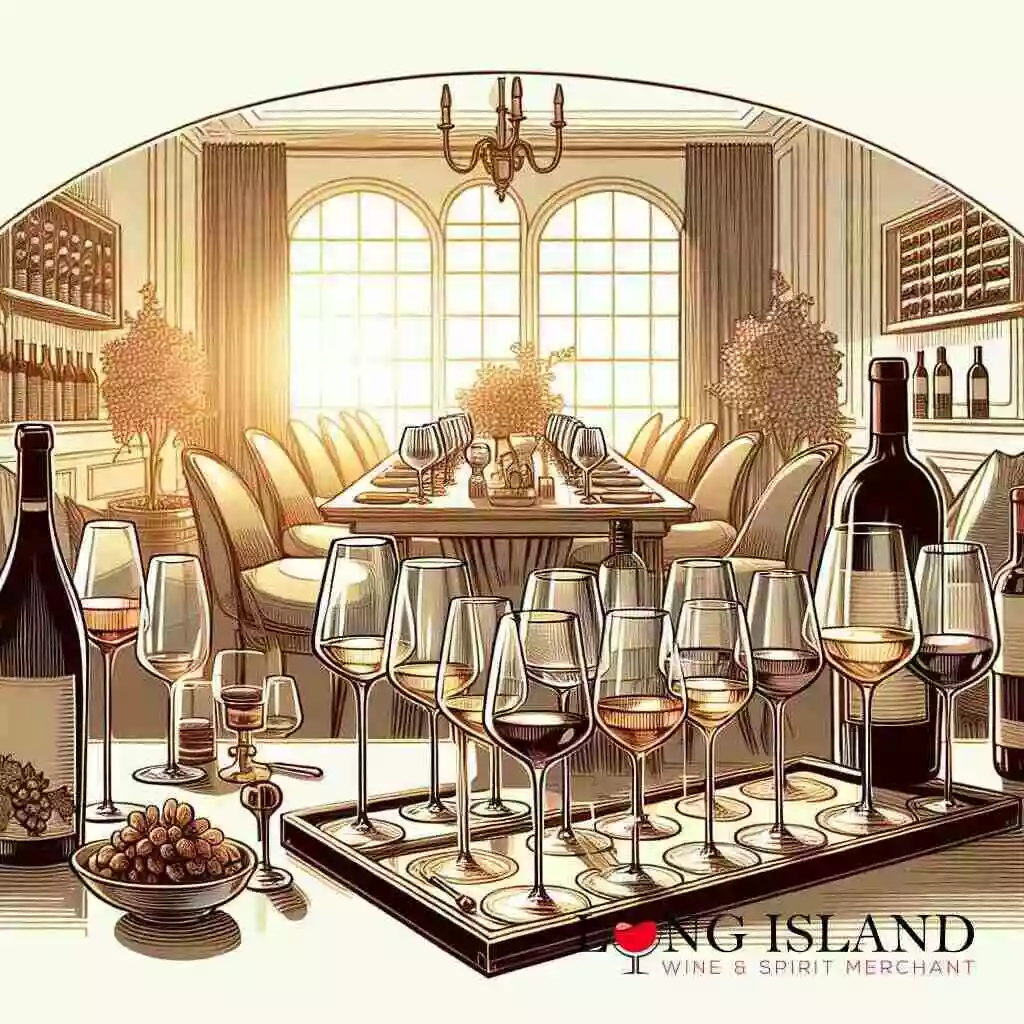
Ultimate Guide to Hosting a Wine Tasting at Home
May 10, 2024
Welcoming the World of Wine to Your Home
Understanding the Essence of Wine Tasting
Wine tasting is more than just sipping on different varieties of wine, it’s an art that encapsulates the rich history, complex flavor profiles, and the meticulous craftsmanship behind each bottle. To truly appreciate wine, one immerses themselves in the sensory examination and evaluation of wine, from its visual appeal and aroma to its taste and texture. This exploration allows individuals to distinguish between the subtleties of grape varieties, winemaking techniques, and the terroir-a term that refers to the natural environment in which the wine is produced, including factors like soil, topography, and climate. By hosting a wine tasting at your home, you invite fellow wine enthusiasts to share in this intimate experience, fostering a deeper connection with the wines and each other.
The Appeal of Hosting Wine Tasting at Home
The concept of hosting a wine tasting at your home has gained immense popularity for several reasons. Firstly, it creates a relaxed and comfortable environment where guests can unwind and savor each tasting without feeling rushed. Unlike at wine bars or wineries, at home, you can control the pace, allowing more time for discussion and reflection on each wine. It also offers a personalized experience where you can curate a selection of wines that may not be readily available in public tasting sessions. Additionally, it promotes social interaction and learning in a more intimate setting, where friends and family can gather to share stories, preferences, and knowledge about wine. Engaging in wine tastings at home can transform any ordinary night into a memorable event filled with discovery, laughter, and the joy of wine.
Essential Preparations for a Home Wine Tasting
Preparing for a home wine tasting involves several key steps to ensure a successful and enjoyable event. Begin by selecting a theme or focus for your tasting-this could be exploring wines from a particular country or region, comparing different varietals, or perhaps sampling organic or biodynamic wines. This theme will guide your wine selection process, making it more cohesive and educational.
Next, consider the wine tasting setup at home, which includes having the proper wine glassware for each type of wine you plan to serve. The right glass can greatly enhance a wine’s aroma and flavor, contributing significantly to the tasting experience. Additionally, create a tranquil and inviting ambiance with adequate lighting, comfortable seating, and perhaps background music to set the mood.
Designing homemade wine tasting cards for your guests can greatly enrich the experience. These cards should include information on each wine, such as the name, region, varietal, and year, along with space for guests to write their notes and impressions. This not only serves as a guide during the tasting but also as a memorable takeaway for your guests.
Lastly, ensure that you have all necessary supplies on hand, such as palate cleansers like water and neutral foods, spittoons for those who prefer not to swallow, and a decanter if you’re serving older wines that might need aeration. With thoughtful preparation and attention to detail, your home wine tasting event can offer an unparalleled opportunity to explore the fascinating world of wine with friends and family.
Selecting the Perfect Wines for Your Tasting
Exploring International and Domestic Spirits
The first step toward hosting an unforgettable wine tasting at your home involves selecting a range of wines that will intrigue and delight your guests. With Liquor Store Open, based in Commack, New York on Long Island, the opportunity to explore both international and domestic spirits becomes a seamless adventure. This Long Island wine and spirit merchant offers an extensive collection, enabling hosts to introduce a spectrum of wines and spirits, including gin, rum, vodka, whiskey, and, of course, a diverse array of fine wines.
When curating your selection, consider incorporating a mix of well-known classics with unique and lesser-known varieties to spark curiosity and conversation. This approach not only enriches the tasting experience but also broadens the palates of your guests, offering them a glimpse into the vast world of wine and spirits. From the robust flavors of a classic Bordeaux to the crisp, refreshing notes of a Sauvignon Blanc from a boutique New Zealand vineyard, the possibilities are endless.
Balancing Wine Varietal Comparison and Wine Region Exploration
Creating a balanced lineup for your tasting involves a strategic selection of wines that highlights different varietals and wine-producing regions. This balance allows guests to appreciate the distinctions between wines made from the same grape but grown in different terroirs, as well as compare the characteristics typical of specific regions. For example, a Pinot Noir from Burgundy can be markedly different from one produced in Oregon’s Willamette Valley, providing a fascinating insight into how location influences wine characteristics.
To embark on this exploration, start by choosing wines for tasting that represent diverse regions from around the globe. Selections could range from the minerality of a German Riesling to the spicy depth of an Argentine Malbec. This comparative approach not only makes the wine tasting more interactive and educational but also showcases the incredible diversity found within the world of wine.
Using the Wine Taste Quiz to Tailor Selections
To further personalize your wine tasting event, consider utilizing the Wine Taste Quiz from Liquor Store Open. This innovative tool is designed to help hosts select wines that align with their specific taste preferences and the anticipated preferences of their guests. By answering a series of questions about favorite flavors, wine experiences, and taste inclinations, hosts can receive curated wine recommendations that will likely resonate with their tasting group.
Using the Wine Taste Quiz to tailor your wine selections ensures that each bottle opened is not just an exploration but a potential new favorite for your guests. It streamlines the selection process, making it easier for hosts to choose wines that will contribute to an engaging and memorable wine tasting experience at home. Whether your guests prefer the boldness of a Cabernet Sauvignon or the subtlety of a Chardonnay, this personalized approach to wine selection promises to elevate your event, making it a truly customized wine tasting journey.
Setting the Stage for Wine Exploration
Choosing the Right Wine Glassware
The selection of wine glassware for tasting is a critical aspect that can significantly influence the wine tasting experience. The shape and size of a wine glass can affect how wine vapor is delivered to the nose and how wine is distributed onto the palate, which in turn impacts the perception of flavors and aromas. For a comprehensive wine tasting at your home, it’s advisable to have a variety of glass types on hand to accommodate different wine styles. Red wines, for example, benefit from larger bowls that allow for greater aeration, while white wines are typically served in glasses with narrower bowls to preserve floral aromas and maintain a cooler temperature. Sparkling wines call for tall, slender flutes that enhance the preservation and display of their bubbles. Equipping yourself with the proper glassware ensures that each wine can be enjoyed to its fullest potential.
Designing Your Wine Tasting Setup
Creating the perfect ambience is crucial for a memorable wine tasting event. Aim for a setting that balances comfort with functionality, ensuring that your guests can focus on the nuances of each wine. Starting with a large table, provide enough space for each guest to have multiple glasses and a personal dumping bucket or spittoon. Lighting should be sufficient to observe the wine’s color and clarity but soft enough to keep the atmosphere relaxed and inviting. Neutral colors and minimalistic decor can prevent any sensory overload, allowing the wines to take center stage. Consider having a designated area for each wine type, accompanied by information cards that introduce the wine’s background, such as the vineyard, grape varietal, and year of production. This thoughtful arrangement enhances the educational aspect of the tasting, enriching your guests’ experience.
Creating Homemade Wine Tasting Cards
The introduction of homemade wine tasting cards adds a personalized and engaging element to your event. These cards are not only a practical tool for guests to record their observations and preferences but also serve as a keepsake of the experience. Creating wine tasting notes at home allows you to tailor each card to the selected wines, including details on the wine’s origin, grape varieties, expected flavor profiles, and any unique production methods. Providing a structured format for notes-such as sections for appearance, aroma, body, taste, and overall impressions-can guide guests through the tasting process. Encourage your guests to jot down their initial impressions and any changes they notice after the wine breathes or as they revisit it throughout the evening. These personal records not only facilitate lively discussion but also help individuals refine their palate and discover new wine preferences.
By carefully considering each aspect of your wine tasting setup, from the glassware to the ambiance to the informative homemade cards, you’re setting the stage for an immersive and educational wine exploration that your guests will remember long after the last glass is poured.
Crafting the Wine Tasting Order and Etiquette
Determining the Wine Tasting Order for Balance
When organizing a wine tasting at your home, the order in which wines are presented plays a pivotal role in crafting a balanced and enjoyable experience. A strategic sequence allows the palate to transition smoothly from lighter to richer, more complex wines without overwhelming the senses. It is generally advisable to start with sparkling wines, move through white to rosé, and then to lighter reds, before delving into full-bodied red wines. This progression caters to the palate’s ability to adapt to increasing intensities of flavor and body. Ending the tasting with sweet dessert wines is a classic approach that rounds off the journey through the world of wines with a delightful finale. By carefully determining the wine tasting order for balance, you ensure that each wine can be appreciated fully without the preceding selections impacting the perception of those that follow.
Guidelines for Wine Tasting Etiquette
Hosting a wine tasting involves not only an exploration of wine but also adherence to certain etiquettes that enhance the overall experience for all participants. Encouraging guests to utilize the spittoons provided helps to maintain a focus on the tasting aspect rather than consumption, allowing for a fuller appreciation of the wines offered. It’s also important to foster an environment where all guests feel comfortable sharing their thoughts and impressions about each wine, regardless of their level of knowledge or experience. Another key component is the use of digital business cards for wine tasting event invitations, which can elevate the professional and organized ambiance of your gathering. Furthermore, reminding guests to refrain from wearing strong perfumes or colognes can prevent such aromas from interfering with the wine’s natural bouquet. Adhering to these guidelines ensures a respectful and engaging atmosphere conducive to a rewarding wine tasting experience.
The Role of Palate Cleansing Between Wines
To maintain the integrity of each wine’s flavor profile during the tasting, it’s essential to provide palate cleansers between samples. Water is a universal palate cleanser, neutralizing the mouth and preparing it for the next tasting. Offering plain bread or unsalted crackers as a more substantial option can also help to absorb lingering flavors, ensuring that each wine can be evaluated on its own merits without the influence of the previous selection. In instances where the tasting involves particularly robust or sweet wines, incorporating a mild cheese or fruit as a cleanser can offer a gentle reset for the palate. Understanding the role of palate cleansing between wines is crucial in delivering a thoughtful and curated wine tasting experience that allows each wine to shine independently and contributes to a more discerning and enjoyable exploration of flavors and aromas.
Diving Deeper into Wine Knowledge
Educating Guests with Wine Education and Wine Flavor Profiles
A critical aspect of hosting a wine tasting at home is the educational component, which can significantly enhance the overall experience for your guests. Educating attendees about wine flavor profiles exploration and the basics of wine education broadens their understanding and appreciation for each sip they take. Begin by discussing the grapes’ origins, the climate conditions of the vineyard, and how these factors influence the wine’s flavor profile.
As you delve into the specifics of each wine, encourage your guests to articulate their perceptions of taste, aroma, and texture. This could include identifying whether a wine tastes fruity, earthy, spicy, or floral, along with distinguishing its body, tannin levels, and acidity. By fostering a deeper understanding of these aspects, you invite your guests into a more engaging and interactive wine tasting experience, transforming them from passive participants into active explorers of the vast world of wine.
Exploring Wine Aging Potential and Wine Rating System
Another intriguing topic for discussion during your home wine tasting is the concept of wine aging and the various wine rating systems. Explaining how aging in either a barrel or bottle can influence the development of a wine’s complexity and flavor can be quite enlightening. Share insights into how wines change over time and what characteristics might indicate a wine has good aging potential.
Introducing your guests to the wine rating system, including how wines are scored by experts and what these scores signify, adds another layer of knowledge to the tasting. Discussing the criteria used by wine critics, such as balance, length, complexity, and intensity, helps guests understand what makes a high-quality wine stand out. This exploration into the technical side of wine appreciation can spark lively discussions and motivate guests to further their wine education journey.
Incorporating a Wine Aroma Kit for an Educative Experience
To truly enhance the educational aspect of your wine tasting event, consider incorporating a wine aroma kit into the session. A wine aroma kit includes vials of common scents found in various wines, such as fruits, spices, floral notes, and earthy elements. Using such a kit can significantly improve your guests’ ability to identify key aromas in each wine, providing a hands-on learning experience that is both fun and informative.
Guiding your guests through smelling the kit’s vials before and after tasting each wine can train their noses to recognize and articulate the subtle and complex aromas present. This interactive component not only makes the tasting more memorable but also helps develop a more nuanced understanding and appreciation of wine. It’s a perfect way to engage guests and deepen their knowledge in an entertaining and sensory way, making your wine tasting event an educational journey that expands their sensory vocabulary and appreciation for the nuances of fine wines.
By diving deeper into wine knowledge through education on flavor profiles, aging potential, rating systems, and aroma identification, you elevate the wine tasting experience from merely enjoying fine wines to understanding the craftsmanship and artistry behind each bottle. This approach cultivates a richer appreciation for wine among your guests and leaves them with new insights and a heightened curiosity about the world of viticulture and oenology.
Elevating the Experience with Food Pairings
Selecting Wine Pairing Snacks that Compliment Flavors
Pairing wines with the right snacks can significantly enhance the tasting experience by highlighting the unique flavors of each wine. When selecting pairings, consider the body, acidity, sweetness, and tannins of the wine. For instance, a light and crisp white wine pairs well with delicate flavors like seafood or fresh cheeses, while a robust red wine complements heartier snacks such as aged cheeses and charcuterie. Experimenting with local specialties offers a delightful way to explore regional flavors, such as pairing wines from Long Island with locally sourced cheeses and produce. For dessert wines, selecting snacks that complement or contrast the sweetness can lead to fascinating discoveries. Perhaps consider the best wines to pair with dessert in Commack, NY, showcasing a thoughtful selection that respects the wine’s and dessert’s balance.
The Art of Serving Wine Properly and at the Right Temperature
The temperature at which wine is served plays a crucial role in its taste and aroma. Serving wine correctly enhances the wine’s characteristics and ensures an optimal tasting experience. White wines are best served chilled, between 45-50°F, to accentuate their acidity and freshness, while red wines generally benefit from a slightly warmer temperature, around 60-65°F, which helps to release their complex aromas and flavors. Sparkling wines and rosés should be served well chilled, close to 40°F, to preserve their crispness and effervescence. Adjusting the serving temperature according to the wine type allows the wine’s full range of flavors to unfold beautifully. Utilizing a wine refrigerator or ice bucket can help maintain the perfect temperature throughout the tasting. For more insights on serving wine correctly, including the use of appropriate glassware and decanting techniques, can further elevate your wine tasting event at home.
Ideas for Blind Wine Tasting and Wine Tasting Themes
Hosting a blind wine tasting can add an element of surprise and challenge to your event, encouraging guests to rely solely on their senses to identify the wines. Cover the bottles with fabric or place them in bags to conceal their identities, and have guests taste and evaluate each wine based on aroma, taste, and texture before revealing the labels. This approach fosters an educational atmosphere, allowing guests to learn without preconceptions influencing their opinions. Additionally, selecting a theme for your wine tasting can focus the selection and guide the event’s educational components. Themes can range from exploring a specific wine varietal, such as Pinot Noir from various regions, to celebrating a particular wine-producing country’s wines. Themed tastings provide a structured way to delve deeper into the intricacies of wine and can be complemented with appropriate wine tasting party invitations that set the tone for the event. By incorporating these creative ideas, you can craft a wine tasting experience that is both insightful and memorable for all participants.
Concluding with a Toast
Reviewing the Highlights of Your Wine Tasting Event
As you approach the end of your wine tasting event at home, taking a moment to review the highlights and shared experiences reinforces the journey your guests have embarked upon. Reflect on the various wines sampled, discussing the distinctive characteristics that set each apart, from the delicate notes of a crisp white to the deep, robust flavors of a red. Highlight the fermentation in the winemaking process, illuminating how it shapes the wine’s complexity and depth. This recap not only serves to consolidate learning but also to celebrate the shared adventure into the world of wine, leaving your guests with a deeper appreciation and enriched understanding of what they’ve tasted.
Encouraging Further Exploration with Parting Gift Ideas
The conclusion of your wine tasting doesn’t have to signify the end of your guests’ exploration into wine. Encourage ongoing discovery by presenting each guest with a parting gift that complements their newfound knowledge and interests. Consider a custom wine case service as an exquisite way to tailor gifts to individual preferences, allowing them to enjoy a curated selection of wines at their leisure. This thoughtful gesture not only acts as a memento of the event but also as an invitation to continue their journey through the vast and varied world of wine, fostering an enduring passion for viticulture and oenology.
Thanking Guests with Personalized Liquor Bottle Engraving
A memorable way to thank your guests for their participation and enthusiasm is through personalized liquor bottle engravings. Whether it’s the bottle of their favorite wine from the tasting or a spirit that caught their interest, an engraved bottle adds a personalized touch that celebrates the occasion. This unique keepsake, echoing the joy and discoveries of the evening, serves as a lasting reminder of the wonderful time spent together. Such gestures not only elevate the personal connection between you and your guests but also underscore the thoughtful attention to detail that characterized your home wine tasting event, ensuring it remains a cherished memory for years to come.
Hosting a wine tasting at your home offers a remarkable opportunity to bond over shared tastes, learn about the diverse world of wine, and create lasting memories. Through careful preparation, engaging education, and thoughtful parting gifts, you can ensure that your event is not only a delightful experience but also a stepping stone for further exploration into the fascinating realm of wines and spirits.
Frequently Asked Questions
Question: What types of wine glassware do I need to properly host a wine tasting at home?
Answer: Selecting the right wine glassware is crucial to enhance the aroma and flavor of the wines during your tasting. At Liquor Store Open, we recommend having a variety of glass types to accommodate different wine styles. Red wines perform best in glasses with larger bowls to allow for aeration, enhancing their complex aromas and flavors. White wines are typically served in narrower glasses to maintain temperature and concentrate delicate floral aromas. Sparkling wines and champagnes benefit from tall, slender flutes to preserve and showcase their bubbles. By equipping your home with these essential types of glassware, you are setting the stage for an immersive wine tasting experience that will impress your guests and elevate their appreciation of each wine’s unique characteristics.
Question: How can I select wines for tasting that will suit the preferences of all my guests?
Answer: Curating a wine selection that caters to a diverse range of preferences can be a delightful challenge. Our Wine Taste Quiz at Liquor Store Open offers a personalized approach to help you navigate this process smoothly. By answering questions about your guests’ favorite flavors, wine experiences, and taste inclinations, you’ll receive curated recommendations that are likely to resonate with the group. Whether your guests prefer the boldness of a Cabernet Sauvignon or the subtlety of a Chardonnay, our tailored selections aim to please a variety of palates, ensuring that your wine tasting event is an engaging and memorable experience for everyone involved. This personalized selection process is a unique service that sets Liquor Store Open apart, ensuring your wine tasting at home is a resounding success.
Question: In your Ultimate Guide to Hosting a Wine Tasting at Home, you mention pairing wine with snacks. Can you provide more guidance on this?
Answer: Absolutely! Selecting wine pairing snacks that complement the flavors of your chosen wines can greatly enhance your tasting experience. At Liquor Store Open, we advise considering the body and flavor profile of each wine when choosing your pairings. For lighter, crisp white wines, opt for delicate snacks like seafood or soft cheeses. Robust red wines pair beautifully with heartier options such as aged cheeses and savory charcuterie. And for dessert wines, matching the sweetness with treats like artisan chocolates or fruit-based desserts can provide a delightful contrast. By thoughtfully matching wines with complimentary snacks, you not only elevate the tasting experience but also provide your guests with practical examples of how to pair wine and food in their own future entertaining, further enriching their wine education and enjoyment.
Question: Can Liquor Store Open provide all the necessary supplies and advice for setting up a professional-level wine tasting setup at home?
Answer: Yes, at Liquor Store Open, we pride ourselves on offering a comprehensive selection of high-quality spirits, fine wines, and essential tasting accessories to make your home wine tasting as professional and enjoyable as possible. From a diverse selection of international and domestic spirits to the proper wine glassware for various varieties, we’ve got everything you need to set up an expert wine tasting at home. Our team is also eager to share valuable tips on wine tasting order, serving temperatures, and palate cleansing between wines, ensuring your event is seamless and sophisticated. Whether you’re exploring wine varietal comparison, wine region exploration, or hosting a themed wine tasting, our expertise and inventory support a truly immersive and educational wine tasting experience.
Question: How should wine be served temperature-wise to ensure the best tasting experience?
Answer: Serving wine at the correct temperature is paramount to unlocking its full bouquet of aromas and flavors. At Liquor Store Open, we recommend serving sparkling wines and rosés well-chilled, close to 40°F, to enhance their crispness and bubbles. White wines should be chilled to 45-50°F to highlight their acidity and freshness. Red wines reveal their complexity best when served slightly cooler than room temperature, around 60-65°F. Utilizing a wine refrigerator or ice bucket during your tasting can aid in maintaining these optimal temperatures. Adhering to these guidelines ensures that each wine presents its characteristics in the best possible light, contributing to a richer tasting experience for you and your guests.
Question: What makes Liquor Store Open the go-to place for hosting wine tastings at home?
Answer: Liquor Store Open is your comprehensive solution for hosting memorable wine tastings at home because we offer a wide selection of fine wines, spirits, and all the necessary accessories for an elevated tasting experience. Our expertise in various wine varietals, regions, and pairing principles enables us to assist our customers in creating customized, educational, and enjoyable wine tasting events. With services like liquor delivery, custom cases of wine, and personalized liquor bottle engraving, we provide a level of convenience and customization unmatched by others. Our Wine Taste Quiz further personalizes the experience by tailoring wine selections to your specific preferences, ensuring every bottle opened is poised to become a new favorite. Trust Liquor Store Open to transform your next wine tasting at home into a sophisticated, enjoyable, and unforgettable event.
